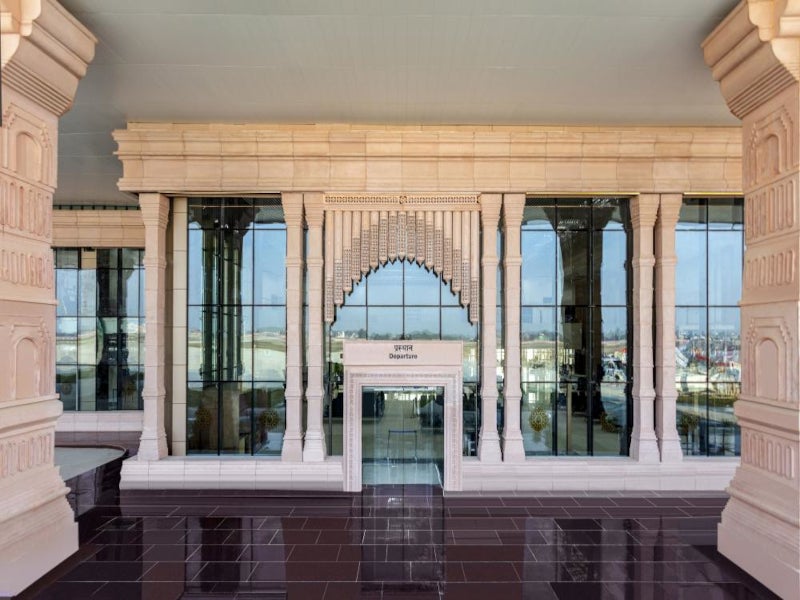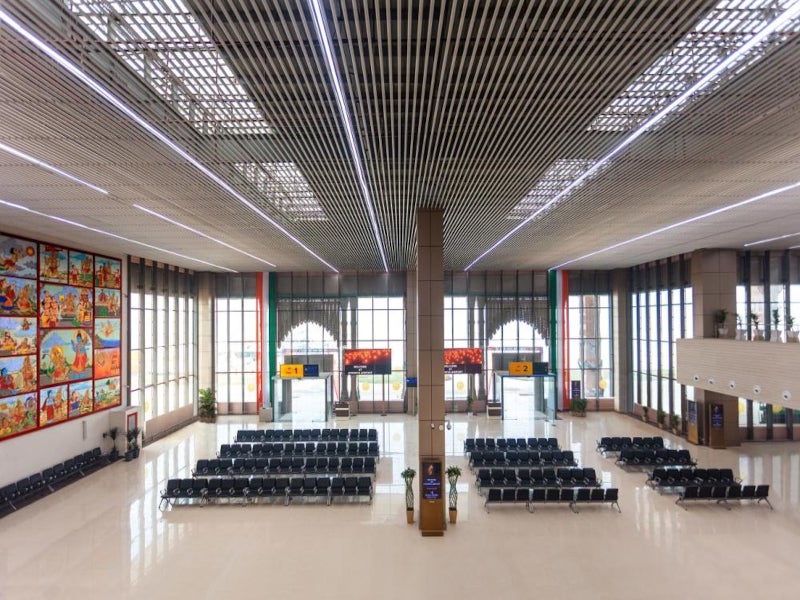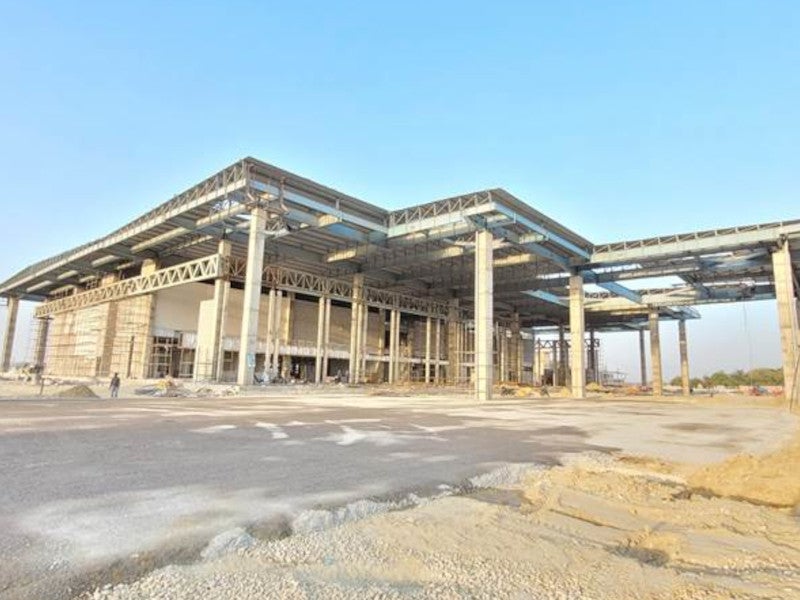Maharishi Valmiki International Airport, previously known as Ayodhya International Airport, is located in Faizabad in Uttar Pradesh, India.
The airport is named after Maharishi Valmiki, the great sage of India who composed the literature The Ramayana, which describes the life and virtues of Lord Rama, prince of Ayodhya.
The Airports Authority of India (AAI) is developing the airport in phases. Phase one of the airport was developed with an investment of more than Rs14.5bn ($174.1m) and was officially inaugurated in December 2023.
The newly built interim terminal building can handle one million passengers annually, which will be increased to six million annually after the completion of the second phase.
The airport provides seamless direct access to Ayodhya, an important religious destination for pilgrims from all over the world. It provides improved airport infrastructure amenities for the passengers arriving in the state while boosting India’s industrial, business and tourism sectors.
Location of the Maharishi Valmiki International Airport
The airport is located at Naka and Usru villages, near National Highway 27 and Faizabad Junction railway station. It is 8km away from the main premises of Sri Ram temple in Ayodhya.
The project involves the transformation of the existing Ayodhya civil enclave into a full-fledged airport. The Ayodhya civil enclave lies on an area of approximately 177 acres (71.62ha) with the runway, measuring 1,500m long and 30m wide.
Uttar Pradesh state government’s civil aviation department signed a lease agreement with the AAI to transfer approximately 317 acres of land for the airport development in April 2022. The state government provided an additional 86 acres of land for the project.
Airport construction details
Also referred to as Maryada Purshottam Sriram Airport, the airport is being developed in three phases.
The first phase involved the construction of a centrally air-conditioned 6,500m² (69,965ft²) terminal building, capable of handling 300 passengers during peak hours. It also included the widening and extension of the runway to a length of 2,200m and width of 45m, with 7.5m shoulders on either side for the operation of Code C type of aircraft (A321) under instrument flight rules (IFR) condition.
The terminal features eight check-in areas with three conveyor belts, and an X-ray baggage inspection system. The airport has car parking for 75 cars and two bus parking and is also passenger with reduced mobility (PRM) compliant.
The project also includes the construction of a 140m × 110m apron with 5.5m shoulders to operate three ATR 72 I Q400 type aircraft, a 310m × 23m link taxi track with 5.5m shoulders to connect the runway and apron, and an isolation bay measuring 93m × 96m. It is equipped with a link taxi track measuring 265m in length and 23m in width, featuring 7.5m shoulders, tailored for the operational needs of Code ‘E’ aircraft.
It also involves the construction of an aerodrome control tower, taxiway strips, a fire watch tower, a fire station and an anti-hijack control room.
The terminal building in the second phase will span a 500,000ft² area with the ability to handle 3,200 passengers in peak hours.
Terminal design details
The terminal design at Maharishi Valmiki International Airport is a fusion of regional architecture with a modern architectural accent. It exemplifies the concept and spirit of Ram Mandir with the terminal roof decorated with shikaras, hung at different heights.
The terminal also features ornate columns with pictures depicting significant moments from the Ramayana. The terminal’s glass facade is designed to provide passengers with a sense of the Ayodhya Palace.
Sustainability features
The terminal building is accredited with the Green Rating for Integrated Habitat Assessment -Version 2019 (GRIHA –V) rating, a national rating system in India designed to evaluate the environmental performance of buildings.
The building includes various sustainability features such as rainwater harvesting, solar-energy-sourced electricity with a 250kWp solar power plant, canopies for energy saving, LED lighting, a double insulated roofing system, low heat gain double glazing unit and skylights.
Other environmentally friendly features include landscaping with fountains, heating, ventilation, and air-conditioning (HVAC), water treatment plant, sewage treatment plant and use of recycled water for landscaping.
Construction packages
Phase one of the Maharishi Valmiki International Airport is divided into two packages. Works under the first package started in December 2021 and the construction of the terminal using pre-engineered buildings was completed in 2023.
Package two of the airport involves other works such as paving and grading, the expansion of the apron to handle eight narrow-body aircraft, runway extension up to 3,700m, isolation bay and taxiways.
Contractors involved
Vishal Infrastructure, a construction company, was awarded the contract to construct the airport’s runway.
Environmental health and safety engineering consultancy ABC Techno Labs India is the main environmental consultant for the Ayodhya International Airport.






